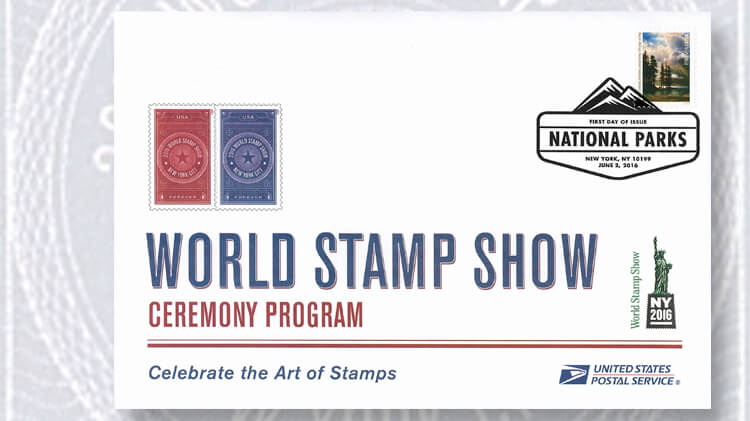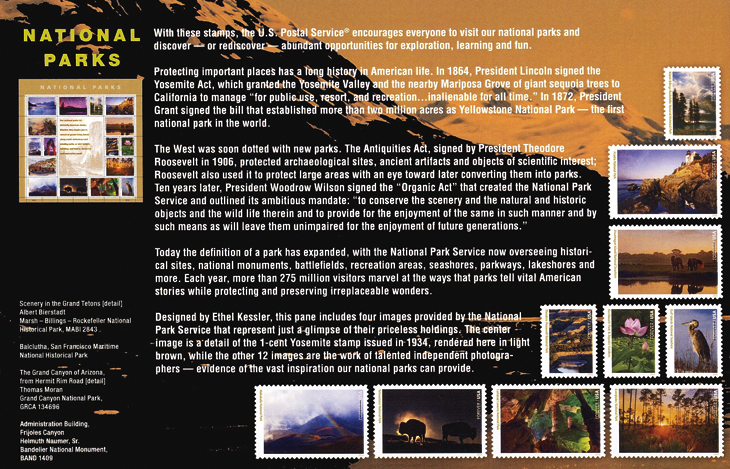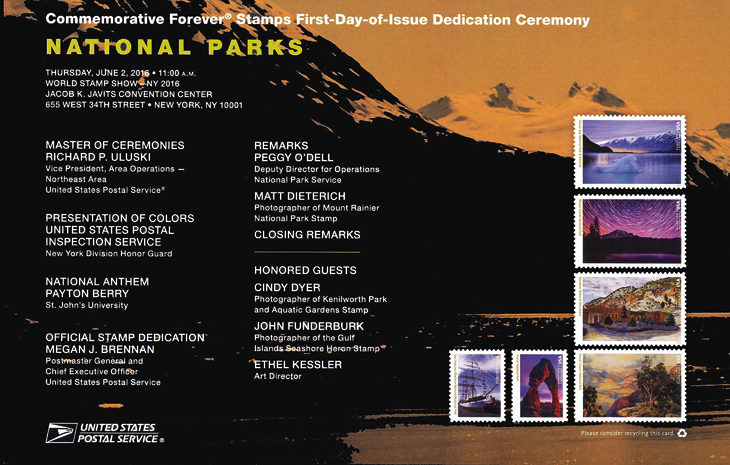US Stamps
A brief history of U.S. stamp ceremony programs
By Lloyd de Vries
It is not often that the United States Postal Service gives a collectible away for free, but it does so every time a ceremony is held for a stamp issuance. The program handed out to those attending a ceremony is prized by many collectors.
As with programs for other events, a first-day ceremony program lists the schedule and the participants at the ceremony. It can be quite simple or rather elaborate: a card, a booklet or part of a larger publication, such as a stamp show program or the guide to a nonphilatelic convention at which a first-day ceremony is being held.
The only real requirement is that the first-day ceremony program list the events.
Connect with Linn’s Stamp News:
Sign up for our newsletter
Like us on Facebook
Follow us on Twitter
The earliest-known program specifically for a first-day ceremony is for the Booker T. Washington stamp (Scott 873) issued April 7, 1940, although there are earlier programs for events that also included a first day of issue.
Through the end of the 20th century, many U.S. first-day ceremony programs were produced by event sponsors or by those who had pushed for the stamp’s issuance. Most, but not all, included the stamp or stamps and a first-day postmark.
Then, around the turn of the century, the USPS standardized its ceremony-program format into a card measuring 5½ inches by 8½ inches, enclosed in an often generic envelope franked with the new issue and first-day postmark.
If the new issue consists of more than one stamp, only one random stamp from the set is used.
The first illustration shows an example of a current standard ceremony program: the front of the program for the June 2 ceremony for the pane of 16 stamps marking the National Park Service’s centennial (Scott 5080).
Six of the stamps are illustrated — but no actual stamps are affixed — on that side and 10 are shown on the back, as seen in the second illustration.
The envelope that contained the program appears in the third image: a generic envelope for U.S. stamps issued at World Stamp Show-New York 2016, with one stamp (Marsh-Billings-Rockefeller National Historical Park, Scott 5080c) affixed and canceled.
The card, which does not have a stamp affixed, is the actual program. The envelope, which has the stamp and postmark, is just a first-day cover.
As with many aspects of collecting, first-day ceremony programs became more popular after publication of a catalog: Scott Pelcyger’s 1989 book, Mellone’s Specialized Catalogue of First Day Ceremony Programs & Events. Unfortunately, there has never been another edition of this reference.
In the 1990s, the USPS began selling first-day ceremony programs, singly or on subscription. During the height of their popularity, programs in bulk lots of 25 could be purchased by dealers.
Because it is easy to obtain a new-issue first-day ceremony program without being at the event (the USPS sells them on its website for $6.95, though only for the most popular issues), some collectors “customize” their program, to show that they (and their program) were actually at the ceremony.
They may add the new stamps and one or more first-day postmarks, or obtain the autographs of the participants in the ceremony. The participants usually are available at an autograph table after the ceremony.
Not all U.S. stamps these days have USPS-sponsored first-day ceremonies, and not all have USPS-produced ceremony programs. Some new issues have locally sponsored ceremonies and locally produced programs.
There is an organization for specialists in this field, the American Ceremony Program Society. Interested collectors can email the president, Mark Gereb, at gereb@aol.com, or the secretary-treasurer, John Peterson, jkpete@cox.net, for more information.
MORE RELATED ARTICLES
Headlines
-
US Stamps
Oct 7, 2024, 3 PMMcMurtrie dismissed as APS education director following Sept. 21 arrest
-
US Stamps
Oct 7, 2024, 12 PMVasiliauskas named president of Mystic Stamp Co.
-
US Stamps
Oct 6, 2024, 5 PMApgar souvenir card available
-
US Stamps
Oct 6, 2024, 4 PMFirst Continental Congress and U.N. stamps receive Scott catalog numbers











